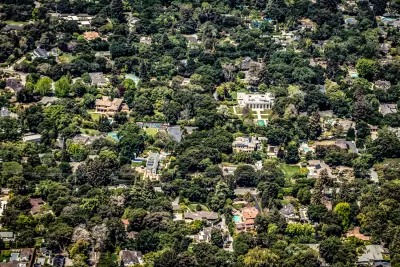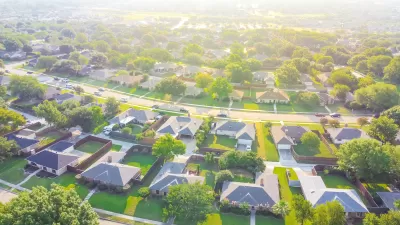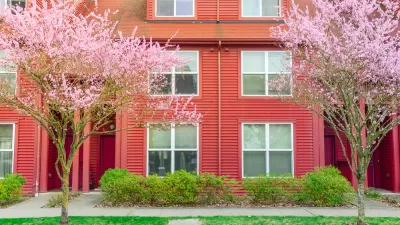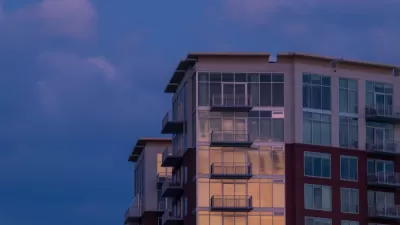Small, often wealthy enclaves build far less multifamily housing than their larger counterparts, exacerbating the dearth of affordable housing near big cities and job centers.

In an article in The Conversation, Paul G. Lewis and Nicholas J. Marantz explain how small, wealthy suburbs contribute to California’s housing crisis by resisting state efforts to mandate or encourage more housing construction.
The authors used census tract data to examine multifamily housing development in cities of various sizes between 2008 and 2018. “Over that span, according to our statistical estimates, a typical neighborhood-size census tract located within a city of 100,000 residents saw the development of 46 more new multifamily units than an otherwise very similar census tract located within a smaller city of 30,000 residents.”
This data reveals that smaller towns are less likely to add sorely needed apartments and other multifamily housing types. When the analysis was expanded to the entire country, the pattern was similar. Wealthy suburbs, often on the outskirts of large cities, fight new housing development; new housing development, if it happens, is pushed farther out, extending commutes and aggravating sprawl.
The authors explain that the nature of small cities makes them prone to political interests that skew toward the status quo. “To be sure, many homeowners in big cities have similar worries. But in a large, diverse city, anti-growth voices often are counterbalanced by pro-housing interests active in city politics, such as large employers, developers, construction unions or affordable-housing nonprofits.”
The article lists the possible mandates and incentives states have implemented to reduce barriers to housing construction, but, as evidenced by Silicon Valley cities, NIMBY groups will attempt creative ways to skirt regulations. In one ambitious example from Oregon, “Voters created and then strengthened an elective metro government to not just plan but actually carry out key regional land-use priorities” in the Portland region.
FULL STORY: How small wealthy suburbs contribute to regional housing problems

Study: Maui’s Plan to Convert Vacation Rentals to Long-Term Housing Could Cause Nearly $1 Billion Economic Loss
The plan would reduce visitor accommodation by 25,% resulting in 1,900 jobs lost.

North Texas Transit Leaders Tout Benefits of TOD for Growing Region
At a summit focused on transit-oriented development, policymakers discussed how North Texas’ expanded light rail system can serve as a tool for economic growth.

Using Old Oil and Gas Wells for Green Energy Storage
Penn State researchers have found that repurposing abandoned oil and gas wells for geothermal-assisted compressed-air energy storage can boost efficiency, reduce environmental risks, and support clean energy and job transitions.

Private Donations Propel Early Restoration of Palisades Playground
Los Angeles has secured over $1.3 million in private funding to restore the Pacific Palisades playground months ahead of schedule, creating a modern, accessible space that supports community healing after recent wildfires.

From Blight to Benefit: Early Results From California’s Equitable Cleanup Program
The Equitable Community Revitalization Grant (ECRG) program is reshaping brownfield redevelopment by prioritizing projects in low-income and environmental justice communities, emphasizing equity, transparency, and community benefits.

Planting Relief: Tackling Las Vegas Heat One Tree at a Time
Nevada Plants, a Las Vegas-based nonprofit, is combating the city’s extreme urban heat by giving away trees to residents in underserved neighborhoods, promoting shade, sustainability, and community health.
Urban Design for Planners 1: Software Tools
This six-course series explores essential urban design concepts using open source software and equips planners with the tools they need to participate fully in the urban design process.
Planning for Universal Design
Learn the tools for implementing Universal Design in planning regulations.
Ascent Environmental
Borough of Carlisle
Institute for Housing and Urban Development Studies (IHS)
City of Grandview
Harvard GSD Executive Education
Toledo-Lucas County Plan Commissions
Salt Lake City
NYU Wagner Graduate School of Public Service





























